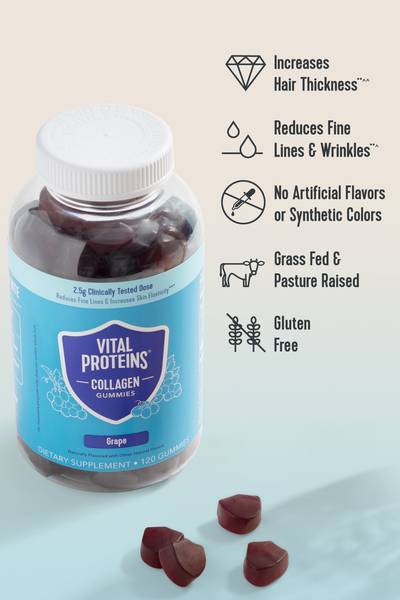Thrift shopping is certainly not a new concept, but seems to be having a moment in more recent times. There's a significant rise in people giving pre-loved clothing and other items a second life and for good reason. Not only can you snag awesome pieces for fabulous prices, but the growth in sustainability efforts has meant people are onboard with keeping perfectly wearable pieces out of the landfill. If you're new to thrift shopping, we've compiled a bit of advice on how to approach the experience so that you can walk away with secondhand treasures sans the headache.

When should I thrift?
Let's start by tacklingwhenis best to head out and do a bit of thrift shopping. "A typical thrift store puts out new merchandise every day — sometimes several times a day," says Hannah Rupp ofThe Outfit Repeater, who adds that the best time to beat the crowds and snag a good deal would be in the morning or late at night.Goodwillalso notes that while there's no "perfect" time, some regulars swear by shopping early on Monday and Tuesday, and that homeowners tend to drop off garage sale leftovers on Sunday nights, making for new fabulous finds.
Additionally, most stores do various types of sale days, saysTyler Chanel, Founder ofThrifts and Tangles, so you'll want to keep an eye out for those and ask your local thrift store when you can shop for less. "Almost all thrift stores offer special discount days of some sort, for example, when I was in college, my favorite day to thrift was on student discount day!"
Where should I go?
While big city thrift stores may certainly be larger and carry more label items, it’s worth venturing out into the suburbs or lesser known areas. "Big city thrift stores are usually full, so it's best to explore smaller stores that are off the beaten path — ask friends and family members for personal recommendations vs. what you might find on Google," suggests Rupp. "I've found a handful of great gems that way!"
Any tips when it comes to sizing?
Thrift stores don't always have dressing rooms to try items on, and vintage clothes tend to run smaller than current sizes, so we wanted to round up a few sizing tips that may be helpful. "Thrift stores carry clothing items and brands that span decades which can make finding your size a big task — carrya tape measure or a piece of string that you can use to measure yourself in a pinch," explains Rupp. You can also take accurate measurements of your body before heading out to shop and then measure the pieces you have an eye on to find an ideal size. (There are plenty oftutorials out there on how to measure yourself if you're a newbie.)
Rupp adds that you may wish to look one or two sizes beyond what you'd normally choose as there can be a variation between garments and pieces occasionally get misplaced. Jessi Russell, a style blogger, agrees with this sentiment in a piece forGoodwill, and notes that you don't necessarily need to focustoomuch on the size label since there's such a wide variety of brands. "I recommend instead looking for a piece that catches your eye, gauge how it looks on the hanger and then try it on—once you get an item into the dressing room, if the fit is way off, it's a 'no,'" she writes. "However, don't forget to be creative too! I fell in love with a navy T-shirt dress that was a little baggy, but looks perfect with a belt. You can also have things altered if you find an amazing item that's a tad big."

How about advice for thrifting online?
If you prefer to do your thrifting online, we've got you covered. "My favorite website to shop secondhand online isthredUP," shares Rupp. "They're an online consignment shop that makes it really easy to find what you want with their vast search options and the ability to save your searches to browse through whenever." She adds that when dealing with independent online sellers on platforms likePoshmarkorDepop, it's important to find someone who can answer all your questions in their item description. "Knowing the size, condition and measurements are all important details that can ultimately help you make a successful purchase!"
Chanel also lists thredUP as one of her top online thrift sites, along with Jane Dottie Vintage andTrue Lo Style. If you're interested in learning about additional online options, she has rounded up severalherewhich cover a little bit of everything from vintage to eclectic to trendy.
Any final bits of wisdom to keep in mind?
And lastly, some final words of wisdom to think about for your thrifting adventures. "My number one tip for buying secondhand is to always closely examine the item for imperfections— nobody wants to find out there's a rip in an odd place or a stubborn stain you can't remove!" recommends Rupp. When it comes to identifying quality, Chanel says toalways look for pieces that are made from materials like silk, cashmere or linen. "These tend to be high-quality items that are designed to last— be sure to feel the fabrics before buying, and if the item feels low-quality, it's probably not worth thrifting."
She also suggests bringing along a friend who's also interested in thrifting to make the experience more fun, wearing comfortable clothing to make it easy to try things on and putting everything that catches your eye into your cart. You also may want to bring your own reusable shopping bags as some thrift stores might not offer them.
Happy shopping!















